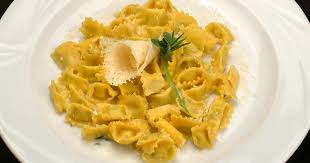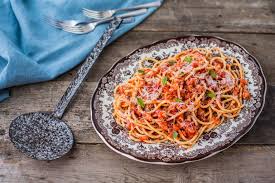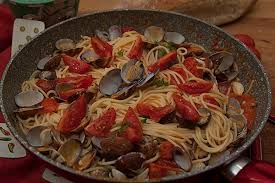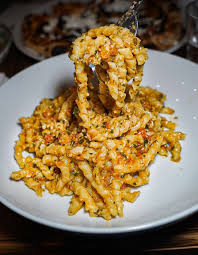Italy’s food scene isn’t just one thing; it’s like a collection of small countries each with its own story, tastes, and, of course, awesome pasta! From the Alps to the Mediterranean, Italy’s geography, weather, and culture totally change what you eat. So, here’s a quick guide to Italian regional pasta – what to try, where to find it, and why it’s a must-eat in that spot.
1. Piedmont: Tajarin and Agnolotti del Plin
Up in the northwest, they love rich food. Tajarin is like a fancy egg noodle usually with butter and truffles. Agnolotti del Plin are like tiny meat pockets, pinched to keep them sealed. Being close to France and loving butter and wild game gives Piedmont food a classy yet comforting edge.

2. Lombardy: Pizzoccheri and Casonsèi
Way up in the Alps, Lombardy keeps it real. Pizzoccheri has buckwheat flour, potatoes, cabbage, and cheese—perfect for snowy weather. Casonsèi, like half-moon ravioli with meat or beets, shows the German history around here.

3. Emilia-Romagna: Tagliatelle al Ragù and Tortellini
Get ready for pasta heaven! This is where tagliatelle al ragù comes from; some people call it spaghetti bolognese but made right with egg noodles, not spaghetti. Then there’s tortellini, tiny rings with pork and Parmigiano cheese, served in broth. They’re all about eggs, pork, and hand-rolled pasta here.

4. Veneto: Bigoli in Salsa
Veneto likes it simple but tasty. Bigoli is like thick spaghetti made with duck eggs, usually with salsa—onions and anchovies cooked forever. This simple, yummy dish shows Venice’s love for seafood and its past as a sea power.

5. Liguria: Trofie al Pesto
Liguria has coastlines and mountains and gave us pesto. Trofie, short twisted pasta does a great job of grabbing pesto. It’s all about what grows here—basil in the sea breeze and olive oil everywhere.

6. Tuscany: Pici all’Aglione
Tuscany is as bold as its wine. Pici are thick, hand-rolled spaghetti, usually with aglione, a strong garlic tomato sauce. It’s simple, hearty food. This is down-to-earth food.

7. Lazio: Bucatini all’Amatriciana and Cacio e Pepe
Around Rome, pasta is quick, tasty, and part of history. Bucatini all’Amatriciana is spaghetti with tomato, guanciale (pork cheek), and pecorino cheese. Cacio e pepe is cheese and pepper that shows how three things can be amazing.

8. Campania: Spaghetti alle Vongole and Ziti al Forno
Down south, Naples and the Amalfi Coast mix sea flavors with soul food
Spaghetti alle vongole (with clams) tastes like the sea, and ziti al forno, baked with meat sauce and cheese, is a Sunday dinner staple. Great tomatoes, seafood, and mozzarella come from Campania’s volcanic soil and coast.

9. Puglia: Orecchiette con Cime di Rapa
In Italy’s heel, they love orecchiette (“little ears”). With cime di rapa (broccoli rabe), garlic, and chili, it’s a bit bitter and earthy. This is uses local veggies and homemade pasta.
Listen to the new song of Andrea Pimpini

10. Sicily: Pasta alla Norma and Busiate al Pesto Trapanese
Sicily’s pasta is as bold as its history. Pasta alla Norma—eggplant, tomatoes, ricotta salata, and basil—is like a tribute to opera. Over west, busiate, corkscrew pasta, gets pesto Trapanese—almonds, tomatoes, and garlic.

11. Sardinia: Malloreddus and Fregola
Sardinia has its own pasta. Malloreddus, Sardinian gnocchi, are short and ridged, with sausage and saffron tomato sauce. Fregola, small toasted pasta, goes with clams or stews—pasta meets couscous.

What Makes Italian Pasta Different by Region?
Geography: Mountains or coast change the food.
Farming: Wheat, veggies, cheese, and oil change by area.
Culture: Influences from other countries from all over.
History: Families share pasta recipes.
Eat Pasta Like a Local! If you visit Italy—or just cook at home—try the local pasta and eat it the old-fashioned way. It’s not just food—it’s culture, weather, and history.
Buon appetito!
Sareena Bilal is a versatile and passionate content writer with a flair for storytelling across diverse domains, including economics, gaming, technology, travel, and dining. With a strong foundation in computer science and a proven record of crafting compelling content for global audiences, she brings both technical insight and cultural sensitivity to every piece she writes. Sareena currently volunteers as a luxury features writer for La Haute D’Arabie, where she produces immersive content on elite travel, wellness, and fine dining.
Her background as a machine learning engineer and software developer gives her a unique edge in breaking down complex tech topics into engaging narratives. Whether she’s writing about cutting-edge AI or reviewing the latest gaming trends, Sareena combines analytical depth with creativity and clarity. She is a self-motivated professional who thrives in remote, flexible environments and is excited to contribute her writing expertise to projects that inform, entertain, and inspire. Sareena’s work is not just about words—it’s about creating lasting impact through meaningful content.